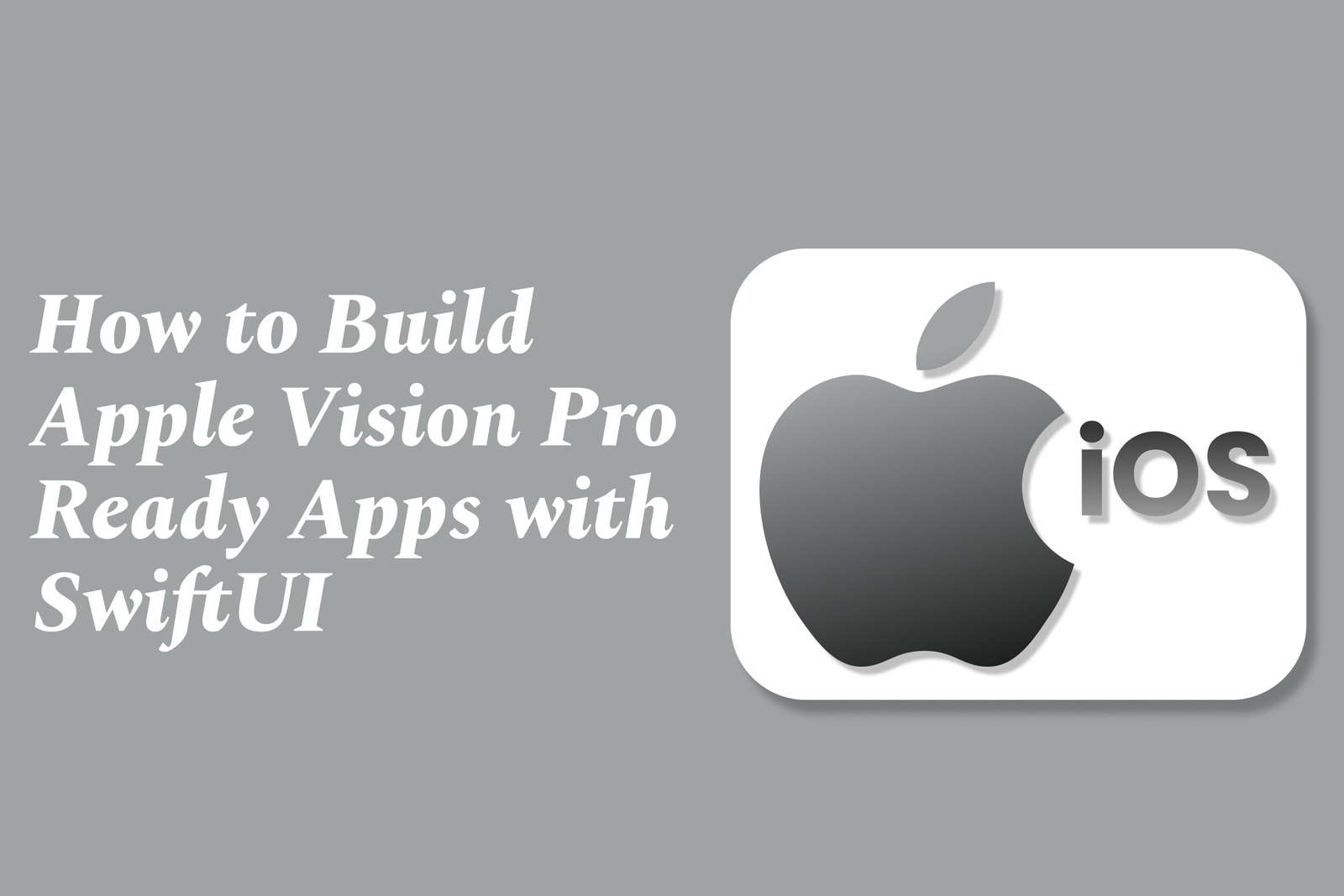How to build Apple Vision Pro ready apps with SwiftUI
Building Apple Vision Pro ready apps with SwiftUI involves creating adaptive, immersive interfaces that blend 2D and 3D content for visionOS. SwiftUI’s declarative syntax and live previews enable seamless development of spatial computing experiences on Apple’s new platform.
How to Build Apple Vision Pro Ready Apps with SwiftUI
1 ) Introduction to Apple Vision Pro and visionOS
Apple Vision Pro is a revolutionary spatial computer combining virtual and augmented reality, controlled by voice, hand gestures, and eye tracking.
Powered by the M2 chip and a dedicated R1 chip for sensor input processing.
The visionOS platform supports immersive and interactive spatial computing experiences blending digital content with the physical world.
2 ) Spatial Computing Concepts in visionOS
Windows: Traditional SwiftUI or UIKit views with added depth for 3D content.
Volumes: 3D spaces within apps using RealityKit or Unity for objects visible from multiple angles.
Spaces: The environment where apps run — Shared Space allows multi app interaction, while Full Space offers immersive dedicated app environments.
3 ) Developing Apps for Apple Vision Pro
Existing iOS apps can be adapted or enhanced for visionOS support.
Developers can:
Add a native visionOS module for integration.
Run cross platform apps in a compatibility mode.
Use cross platform libraries designed for visionOS development.
4 ) Using SwiftUI for Vision Pro Apps
SwiftUI is fully supported and enables building interfaces that easily adapt between iOS, macOS, and visionOS.
A SwiftUI app uses views like Text, Image, Circle, and modifiers to build UI rapidly.
Live previews in Xcode facilitate fast iteration and development.
Core UI components can be combined with 3D content to create engaging spatial experiences.
5 ) Building a Simple Vision Pro Ready SwiftUI App
Start with Xcode and create a new SwiftUI project.
Use basic shapes and symbols (such as circles and SF Symbols) with modifiers for color and size.
Overlay icons on shapes for attractive UI elements.
SwiftUI automatically adapts to dark and light modes, enhancing user experience.
6 ) Cross Platform Development Approaches
Flutter apps can be configured to run on Apple Vision Pro by updating Xcode settings and enabling visionOS in Supported Destinations.
Consider using hybrid setups to share code while leveraging native Vision Pro features as needed.
7 ) Looking Ahead
Vision Pro supports fluid transitions from traditional 2D windows to fully immersive 3D spaces.
Developers should explore adding 3D content and spatial interactions to create innovative user experiences.
Familiar Apple frameworks like RealityKit, UIKit, ARKit, and SwiftUI provide a versatile toolkit for visionOS development.
Summary:
Building apps for Apple Vision Pro involves understanding spatial computing fundamentals, leveraging SwiftUI's powerful and adaptive UI components, and optionally integrating cross platform tools like Flutter. Designing for visionOS unlocks new immersive interaction modes, offering users seamless access to both virtual and real world content within a unified spatial environment. SwiftUI’s declarative syntax and live previews accelerate development, making it an ideal starting point to create next generation Vision Pro applications.
https://justacademy.in/news-detail/how-react-native-is-helping-apps-go-global-faster
https://justacademy.in/news-detail/android-app-store-alternatives-news
https://justacademy.in/news-detail/what-ios-19-means-for-arkit-developers
https://justacademy.in/news-detail/react-native's-new-architecture:-what-it-means-for-your-apps
https://justacademy.in/news-detail/how-to-test-ios-19-apps-with-new-simulator-features
Related Posts
In 2025, top Angular libraries offer modern, feature-rich components and tools for building dynamic web apps. From powerful data grids to low-code platforms like UI Bakery, these libraries enhance development speed, UI design, and scalability, making them essential for Angular developers.
Migrating from AngularJS to Angular 17 involves gradually upgrading your app by running both frameworks together using tools like ngUpgrade, rewriting components in TypeScript, and adopting Angular’s modern architecture to enhance performance, maintainability, and long-term support.
Angular state management tools help organize and handle app data efficiently, improving scalability and maintainability. Popular options include NgRx for robust, RxJS-based patterns, and newer Signal Store solutions that offer simpler, reactive approaches integrated tightly with Angular’s latest features.
RxJS in Angular empowers developers to manage asynchronous data streams with powerful operators like `forkJoin`, `combineLatest`, and `zip`. Mastering these key operators in 2025 is essential for building efficient, reactive applications that handle complex event sequences seamlessly.
Angular performance optimization in 2025 focuses on improving app speed and responsiveness by using techniques like OnPush change detection, lazy loading, efficient data caching, and AOT compilation. These practices reduce load times, enhance user experience, and ensure scalable, fast Angular applications.
In 2025, Angular remains preferred for large-scale, enterprise apps with its robust, all-in-one framework, while Vue attracts developers seeking simplicity and fast development for smaller projects. Both frameworks excel, with choice driven by project needs and team expertise.
Angular Signals are a new reactive primitive in Angular 16 that enable fine-grained, efficient change detection by automatically tracking dependencies and updating only affected parts of the UI. They simplify state management and boost app performance, revolutionizing Angular's reactivity model.
Angular interview questions to prepare in 2025 focus on core concepts like components, directives, data binding, routing, and dependency injection, along with TypeScript mastery and latest Angular features to ensure strong practical knowledge for building scalable, efficient web applications.
AngularJS reached its official end of support in January 2022, meaning no further updates or security patches. To ensure app security and performance, developers should consider migrating to modern Angular versions or seek third-party long-term support options if immediate migration isn’t possible.
The Angular Roadmap 2025 highlights upcoming features focused on improving developer experience and performance, including zoneless Angular, Signals integration, enhanced Forms, async data handling, improved HMR, and expanded Angular Material/CDK enhancements, driving modern, efficient web app development.










